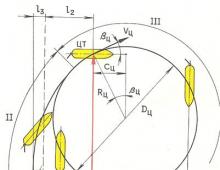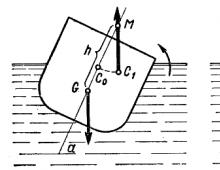Kaiserburg Castle. Nuremberg fortress
Monument of medieval architecture of the city of Nuremberg. It consists of the Imperial Fortress in the western part and the Burggrave Fortress in the eastern part. The fortifications, damaged during the bombing of Nuremberg by the Allied forces in World War II, were completely restored in their historical form after its end. The Nuremberg Fortress is one of the most significant architectural and cultural monuments cities.
The Nuremberg Fortress is located north of the Pegnitz River on top of a rock (geological sandstone outcrop) overlooking the Seebald Old Town. From the fortress observation platform, facing south, a magnificent view of the Craftsmen's Quarter lies below and Old city. A few tens of meters south of the foot of the cliff is the house of Albrecht Dürer, where the famous artist was born and spent a considerable part of his life.
In the southern part of the Imperial Fortress there is an observation platform overlooking the Old City. Due to the location of the fortress on an outstanding rock, relatively flat surrounding landscape, visibility from the observation platform is more than ten kilometers.
Almost in the center of the fortress ensemble rises an observation tower, which, together with the Imperial Fortress, is a symbol of the city. A spiral wooden staircase leading along the wall to the upper landings, like most spiral staircases medieval towers, twists to the right. Visiting the tower is paid.
In the middle of the yard in a small stone building is the so-called "Deep well". Its adit is cut into the rock on which the castle stands, to the aquifers that feed the Regnitz River. The depth of the well is 47 meters. Its bottom is at an altitude of 301.67 m above sea level. The sound from a glass of water poured into the adit returns back to the listener only after 5 seconds. There is a fee to visit the well.
The Burggrave Castle belonged to the Hohenzollern family from the 12th century. However, their relationship with the townspeople did not work out, who eventually survived from here representatives of a powerful family whose influence spread throughout Germany. When at the beginning of the XV century. the Burgrave of Nuremberg Frederick VI of Hohenzollern had the opportunity to acquire the electorate of Brandenburg and become elector, he parted with the castle without regret, selling it to the city, and invested in " new project". They say that the citizens of Nuremberg built the Luginsland Tower specifically to watch what was happening in the castle. From the tower you can almost look into its windows.
In recent years, during the research of burials on the territory of the Burggrave fortress, traces of settlements founded earlier than 1000 were found (previously it was believed that the settlement of the top of the fortress mountain began in the first or second century of the second millennium). At the same time, the foundation of a round watchtower with a wall thickness of over two meters was discovered, which representatives of the Bavarian administration cultural heritage has been dated around 1000 AD.
IN German city There are many architectural monuments in Nuremberg, but the Nuremberg fortress stands out among them in particular. In fact, this attraction is not just a fortress, but a whole fortress ensemble, consisting of several significant buildings.
History of the fortress in Nuremberg
On the territory where the complex is located, there are the following buildings:
- Imperial fortress;
- Burggrave Fortress;
- Fortress of the imperial city.
There are also various fortifications on this territory, some of which were destroyed during the Second World War.
The fortress of Burggrave was rebuilt in the 11th century. Today, its ruined walls cannot be restored. Church services are still held in the chapel of St. Walpurgis; this building is the best preserved.
The imperial fortress was built in the 12th century. Its most interesting parts are a well of great depth and the Round Tower, which offers a breathtaking panorama of the city.
Luginsland is also considered an important part of the attraction. This tower was built by the townspeople when they had a conflict with the burgrave. From this man-made hill, people could watch the fortress of their opponent.
Today, there is a museum in the fortress that tells its history with the help of various expositions. Part of the city wall is also open to tourists. It is located next to the gardens. Anyone can come and see her.
In the 12th century, a real observatory operated in the Nuremberg fortress. It was founded by astronomer Georg Aimmart. The observatory worked in one of the bastions. Then it was closed. Now a memorial column has been installed on the territory of the fortress, which reminds of Aimmart's contribution to science.
Archaeologists also carried out their research on the territory of the fortress, and found traces of ancient settlements there, which they identified as belonging to the year 1000.
The complex itself is located on a mountain, which was formed from rocky rocks. The river Pegnitz flows to the north next to it. The fortress is visible from high points Old city. From it opens good review to the artisan quarter. Near one of the fortress walls you can see the house of the German artist Albrecht Dürer.
Nuremberg Fortress is an amazing medieval architecture, beautiful nature around and stones breathing history on the walls. There are many associated with this complex. historical events, personal tragedies and incredible deeds. Its history is older and deeper than it might seem at first glance. You can get acquainted with some historical intricacies if you still visit the museums of the fortress. Others will remain a mystery to us.
How to get to Nuremberg Fortress?
The fortress is located in that part of Germany, which is called Bavaria. It is located next to the Old City. To get to the fortress walls, you need to take any transport to the center of Nuremberg, from there to the fortress "at hand".
Address: Burg 13, 90403 Nürnberg, Germany
Telephone: +49 911 2446590
Nuremberg fortress on the map of Germany
(1
ratings, average: 5,00
out of 5)
In order to rate a post, you must be a registered user of the site.
Nuremberg fortress
View of the Nuremberg fortress from the Old Town (From the south)
Nuremberg fortress (German. Nurnberger Burg listen)) is a monument of medieval architecture of the city of Nuremberg. Comprises Imperial fortress (Kaiserburg) in the western and Burggrave Fortress (Burggrafenburg) in the eastern part. The fortifications, damaged during the bombing of Nuremberg by the Allied forces in World War II, were completely restored in their historical form after it ended. The Nuremberg Fortress is one of the most significant architectural and cultural monuments of the city.

View of the Burg from the north. 1809
Position
The Nuremberg Fortress is located north of the Pegnitz River on top of a rock (geological sandstone outcrop) overlooking the Seebald Old Town (Sebalder Altstadt). From the fortress observation deck, facing south, there is a magnificent view of the Craftsmen's Quarter and the Old Town lying below it. A few tens of meters south of the foot of the cliff is the house of Albrecht Dürer, where the famous artist was born and spent a considerable part of his life.
Sights of the Imperial Fortress
observation deck
In the southern part of the fortress there is an observation deck overlooking the Old Town ( German. Altstadt). Due to the location of the fortress on an outstanding rock, relatively flat surrounding landscape, visibility from the observation platform is more than ten kilometers.
lookout tower
Almost in the center of the fortress ensemble rises an observation tower, which, together with the Imperial Fortress, is a symbol of the city. A spiral wooden staircase leading along the wall to the upper landings, like the spiral staircases of most medieval towers, twists to the right. The visit is paid.
double chapel
Three-level chapel: the lower tier was intended for chivalry and retinue, the middle tier, located on the same level as the base of the stone crucifix - for the king and his inner circle, a balcony located on the opposite wall from the altar just below the level of the head of Christ on the crucifix - only for the Kaiser (emperor).
deep well
In the middle of the courtyard in a small stone building is the so-called "Deep well" (German . Tiefer Brunner). Its adit is cut into the rock on which the castle stands, down to the aquifers that feed the river Regnitz. The depth of the well is 47 meters. Its bottom is at an altitude of 301.67 m above sea level. The sound from a glass of water poured into the adit returns back to the listener only after 5 seconds. The visit is paid.
Fortress Museum
The visit to the museum is paid.
Dungeons and galleries
During the Middle Ages, beer cellars were located in the cellars of the fortress. During the Second World War, in one of the dungeons of the fortress, the Allied forces discovered a Nazi bunker hiding place with countless art objects from the looted museums of Europe. One of the exhibits was the so-called Vienna Spear or the Spear of Destiny, stolen by Hitler in one of the museums in Vienna. After the surrender of Germany, the valuables were returned to museums.
Wall Gardens
The fortress gardens and the part of the city wall open to the public, overlooking the inner part of the Old City to the Albrecht Dürer House, are open to the public.
Sights of the Burggrave Fortress
Review
At present, due to a variety of buildings over several centuries since its foundation, the Nuremberg fortress is considered to consist of three parts. However, a clear separation of their boundaries seems to be possible only conditionally.
Archaeological research
In recent years, during the research of burials on the territory of the fortress, traces of settlements founded earlier than 1000 were found (it was previously believed that the settlement of the top of the fortress mountain began in the first or second century of the second millennium). At the same time, the foundation of a round watchtower with a wall thickness of more than two meters was discovered, which was dated by representatives of the Bavarian Cultural Heritage Office around 1000 AD. e.
see also
Links
- Official page of the Nuremberg Fortress on the website of the Bavarian Castle Office (eng.)
- Nuremberg: Kaiserburg Imperial Castle - Deutsche Welle Report
Coordinates : 49°27′28″ s. sh. 11°04′33″ e. d. / 49.457778° N sh. 11.075833° E d.(G)(O)49.457778 , 11.075833
Kaiserburg Castle - the most famous fortress of Nuremberg, a monumental monument of the medieval architecture of this German city
Today, the Nuremberg Fortress occupies one of the most significant places among the architectural and cultural monuments of the city.

The territory of the castle is divided into eastern (Imperial fortress) and western (Burggrave fortress) parts


Kaiserburg rises above the Old Town on top of a cliff, so from here you can see beautiful views both the Old Town itself and the Craftsmen's Quarter not far from it

For a more convenient inspection of the above and nearby surroundings, a special observation platform has been made in the southern part of the fortress, the visibility from which is more than ten kilometers.


However, beautiful views open not only from the platform, but also from the observation tower, which rises almost in the very center above the entire fortress ensemble. A wooden spiral staircase, laid along the wall, leads to its upper platforms. Profile lookout tower is the symbol of Nuremberg

Also on the territory of the Kaiserburg castle there is a two-level chapel, the lower floor of which was intended for the knights and the royal retinue, the middle tier - only for the king and his inner circle. In addition, there is also a small balcony opposite the altar, where only the emperor was allowed. A large stone crucifixion of Christ is installed in the chapel, the base of which is at the level of the middle tier, and the head rises slightly above the royal balcony

Another interesting attraction of the fortress is the Deep Well, named so not for the sake of a beautiful word - the adit of the well is cut into the rock as much as 47 meters down, while its bottom still rises above sea level by more than 300 meters. The sound from a glass of water poured into the Deep Well "gets" to the surface only after 5 seconds

In the medieval beer cellars of Kaiserburg during the Second World War, the Nazis hid great amount stolen. Among other stolen valuables subsequently found here was the famous Spear of Destiny, which Hitler took from the Vienna historical museum. All exhibits were returned to their owners after the war.


The Nuremberg Fortress was badly damaged during the Allied bombings of World War II, but was subsequently completely restored in original form

On the left in the foreground is the Church of St. Sebald, on the right - Frauenkirche
Night Kaiserburg


Visitors to the castle complex leisurely walk along the fortress walls and in the beautiful gardens of Kaiserburg for free, but you will have to pay to visit the Observation Tower, the Deep Well and the Fortress Museum
Previous photo Next photo





This fortress is the collective name of three structures intended for the defense of the city. The complex includes the Imperial Castle, the fortress of the imperial city and the fortress of the burggrave.
Little remains of the burggrave's fortress. The oldest building is the Pentagonal Tower, which was built in the 11th century. Tourists are interested in the chapel of St. Walpurgis, where divine services are held today.
The imperial castle began to be built in the 12th century. It also suffered from time and aggressive battles. Of the several structures, the most interesting are the Round Tower, which offers a wonderful view of the city, and a deep well, which is cut into the rock to supply water to the castle during the siege.
The townspeople built the Luginsland Tower during the conflict between the City Council and the burgrave. From here they could observe its fortress. This tower is connected to the Pentagonal building of the imperial stables. Here not only horses lived, but also grain was stored. The building had a five-story attic with many windows for good grain ventilation.
Fortress in Nuremberg




